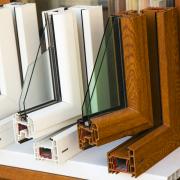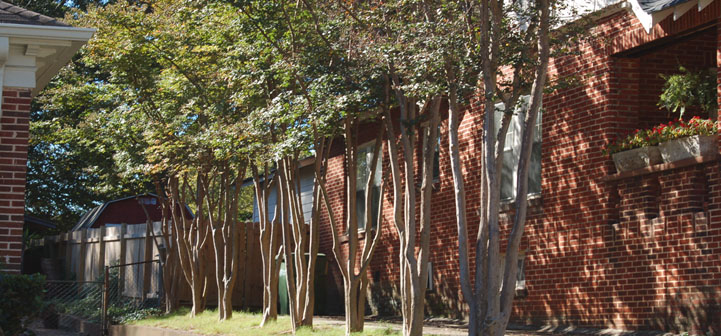Reviewed and Revised on 11/13/2013
Why Energy Efficient Windows? The Costs and the Benefits.
Your windows typically provide you with a view, ventilation, shelter, and light. They may also be costing you loss of energy, hard earned dollars, and comfort. Inadequately insulated windows and doors can cost up to 30% a homes’ energy dollars. Many old U.S. homes have single-glazed (one glass layer) windows. These homeowners may choose to add storm windows, or replace them with new double or triple glazed windows having high performance glass to get better energy performing windows and save their energy dollars.
While it may take several years for new windows to pay off in energy cost savings, the additional benefits in terms of added comfort, reduced body heat radiation to cold glass, airflow, and improved functionality may make the investment worth it to you. That said other energy improvements – adding insulation, weatherstripping and caulking, air sealing, insulating duct work, and an energy audit – typically reduce energy use and provide better returns for the dollar spent. It is thus very important that you do the basic home weatherization before replacing the existing windows.
Irrespective of whether your new window purchase is to replace the existing leaky ones or for a home being built, here are some considerations which can help you choose energy efficient windows.
General Features
-
Windows should have weatherstripping at all moveable joints, be made of strong, durable materials, have interlocking or overlapping joints, and warm-edge spacers between the window glazings. Select new windows with low air leakage ratings. High-performance windows have at least two pieces of glass and a low-e (low emissivity) coating. Low-e storm windows are an energy-saving alternative to replacing windows.
-
Look for the ENERGY STAR® label and the National Fenestration Rating Council (NFRC) label. For specific window ratings go to the NFRCs Directory Search. The NFRC is an agency that standardizes window testing and ratings. They verify the window performance using computers and lab testing. Manufacturers voluntarily submit their windows for performance tests. Know what the performance measures mean before shopping for windows.
Performance Measures
-
U-factor: The U-factor is a measurement of the rate of heat transfer or heat loss through a product. The lower the U-factor, the lower the amount of heat loss, and the better the product is at insulating. U-factors typically range from about 0.20 to 1.20. Look for windows that provide the value for the total window and not just the center of the glass.
-
R-value: The R-value is a measurement of a product’s resistance to heat loss or conductivity – higher R-value materials are more energy efficient with greater resistance to heat flow and higher insulative values. The R-value is the inverse or reciprocal to the U-factor.
-
Solar heat gain coefficient: Low solar heat gain coefficients (SHGCs) reduce solar (sun) heat gain and are a priority in warm and hot climates. The SHGC scale is between 0 and 1. The lower the SHGC, the better the product or window is at blocking unwanted solar heat gain, which is important in hot summers. The SHGC measures the incident solar radiation admitted through a window, both directly transmitted and absorbed and released inward.
-
Light transmittance: Visible transmittance (VT) is a measure of how much light comes through a product or the glass, and is measured between 0 and 1. The higher the VT, the higher the daylighting. The visible light transmittance should be higher or above 60% to 80% if the focus is on daylighting.
-
Condensation resistance: Condensation resistance (CR) measures the resistance to the formation of condensation. Measurement values are between 1 and 100. Higher numbers mean the product is better at resisting condensation. The rating is optional.
-
Air leakage: Air leakage (AL) measures how much outside air comes into a home through a product or window. Typically, the air leakage rates are between 0.1 and 0.3. The lower the air leakage value, the better the window will keep air out if it is properly installed. Window labels may not show the AL rating as it is optional.
Go here for information on Performance Measurement recommendations for different US. climate areas.
Window Type or Style
When selecting windows, consider the type of window, or style. Do you want a double-hung, casement, sliding , stationary or awning window? Each has specific features that may affect air infiltration.
-
Awning windows provide good ventilation when opened. When awning windows have a quality gasket around the window, and it is closed and locked, this style of window provides good protection against air infiltration.
-
Casement windows are similar to awning windows except they are vertical. With quality gaskets and tight fit, they also provide good protection against air infiltration. They have only the outer perimeter window area that can allow air leaks.
-
Single and double hung windows also provide ventilation. However, they have more potential for air leaks at or near the center of the glass, where the windows lock together, and the two sashes meet. They must be weatherstripped well, or this window style will allow more air infiltration along the edges of the frame or sliding track and at the area where the two sashes meet.
-
Sliding windows are very similar to single and double hung except they are turned sideways. They must also be weatherstripped well. The locking mechanism must draw the window sash tightly to the frame.
Window Options
-
Consider installing exterior or interior storm windows if it isn’t feasible or affordable to replace windows. Storm windows can reduce heat loss through the windows by about 25% to 50%.
-
Another alternative to replacing windows is to have solar film installed on single-pane glass to reduce heat gain. Solar films may be tints. Tints reduce the light entering the home. Transparent films reduce solar radiation while allowing light to enter. Check the SHGC rating.
-
To keep the sun’s heat out of the house (for hot climates, east- and west-facing windows, and unshaded south-facing windows), a Low-e coating should be applied to the outside pane of glass. If the windows are designed to provide heat energy in the winter and keep heat inside the house (typical of cold climates), the Low-e coating should be applied to the inside pane of glass.
-
For more information on windows for warm and hot climates, see Energy Efficient Homes: Windows and Skylights. For information on selecting windows for your particular climate, consult Energy Star’s Windows- Climate Zone Finder.
Window Frames
Window frames also affect the energy efficiency of windows. Frames may be made of wood, metal clad wood, vinyl, aluminum, composite, fiberglass, or a combination of these materials.

-
Aluminum as a metal, although durable and low maintenance, conducts heat resulting in heat loss, and may result in some condensation formation. To reduce heat conduction or flow, aluminum windows should have a thermal break. This is accomplished using an edge spacer or material within the window frame to reduce the movement or conduction of heat to cooler frame surfaces.
-
Vinyl window frames can fade (although stabilizers reduce the problem), become brittle, and expand and contract more than aluminum or wood. Vinyl frames have the potential for eventual air leakage due to this expansion and contraction. Vinyl or aluminum clad wood frames reduce maintenance.
-
Wood frames also contract, expand, and require painting or other finishes to protect the wood and maintain their appearance. Wood can be painted to allow for color change, has good insulative value, and is strong.
-
Fiberglass frames are stable, low maintenance, and non-conductive.
-
Frames made of wood, vinyl, and fiberglass conduct less heat resulting in lower U-factors than aluminum frames. Wood composites, fiberglass, and reinforced vinyl have insulative values similar or higher than solid wood frames. Some frames have their cavities filled with foam insulation to increase their insulative ability.
-
Warm edge spacers between glazing layers are used to reduce conductivity and condensation and serve as a thermal break to reduce heat transfer. They are especially important in metal frames.
For detailed information in making your decisions about the type of window frame for energy efficiency, see the U.S. Department of Energy Energy Types of Window Frames.
Window Installation for Energy Efficiency
Installing new windows means paying attention to correct installation requirements for the particular window style. Have your windows installed by trained professionals. Be sure they’re installed according to manufacturer’s instructions, or your warranty may be void.
Incorrect installation may lead to energy losses as well as water moving into the inner wall cavity, resulting in damaged wood and siding below the window as the water moves downward. The window opening must be flashed and integrated into the home’s weather-resistive barrier so that any potential water leaks do not cause damage. Install window head and sill flashing, and be sure correct flashing procedures are used. To air seal, caulk the backsides of the window mounting top and side flanges to the weather-resistive barrier when installing.
Any weep holes that allow moisture drainage should not be plugged. Some newer windows are meant to allow any moisture that does get in to escape. If in doubt about the installation methods, contact the manufacturer.
Financial Incentives
Check with your local utilities for any rebates or financial incentives that are available for window replacement. For information on federal U.S. tax credits go here. Another place to get information is Incentives, Policies for Renewables and Efficiency.
Few additional resources on Energy Efficient Windows:
Lower Cost Methods for Energy Efficient Windows in Existing Homes



